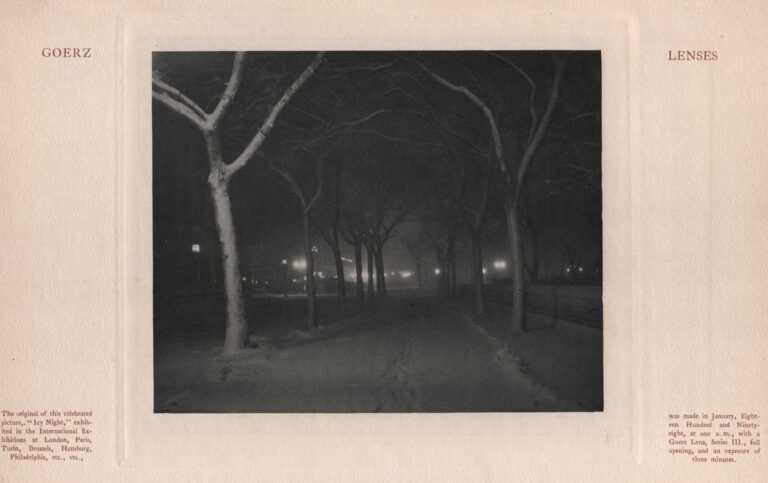
Miss Lily Hanbury
Harold Baker’s Nos. 57 and 59 are good portraits, but neither of them comes up to the level of his two portraits of Miss Lily Hanbury, one of which, in particular, No. 175, reproduced on page 45, is an almost entirely satisfactory piece of work. (1.)
Birmingham, England commercial photographer Harold Baker is known to have photographed esteemed English actress Lily Hanbury (1873-1908) several times in the late 1890s. In late 1896, one of his brown toned carbon photographs of Hanbury was lauded by judges in the Bristol Exhibition. (The Bristol and West of England Amateur Photographic Association Exhibition)
This particular full-length portrait of Hanbury reproduced as a photogravure was believed to have first been entered in the Photographic Salon’s 1898 Dudley Gallery Exhibition in London, with commentary quoted above: “an almost entirely satisfactory piece of work”.
Harold Baker: 1860-1942
The following biography is from the Birmingham City Council, which also maintains a collection of 200 albumen prints by Baker as well as 500 half-plate glass negatives of architectural and historical subjects.
Harold Baker was born in Birmingham in 1860. He was the son of Samuel Henry Baker, an artist and one-time president of the Royal Birmingham Society of Artists. Baker was educated at King Edward Grammar School in New Street and apprenticed to a wood-carver of church furniture and designer of stained glass windows.
A keen amateur photographer, financed by his father, Baker opened a photographic studio at 36 Cherry Street in 1886. The following year he moved to premises in New Street. About 1897 he became closely associated with the “Birmingham Magazine of Arts and Industries”, eventually becoming the magazine’s official photographer.
In 1902, Sir J. Benjamin Stone was appointed official photographer for the coronation of King Edward VII. Stone invited Baker to assist him. Baker is credited with having taken the only photograph of the proclamation of the King at Saint James’ Palace.
Returning to Birmingham after a year in London, he turned his business into a limited company. With his friend and fellow member of the Birmingham Photographic Society, C.S. Baynton, he went into business selling “Harold Baker’s developer”. While experimenting with the developer he discovered a wood preservative and a solution for making wood fire-proof.
By now a fairly well known figure in photographic circles, Baker became a regular contributor to several of the photographic magazines. He appears eager to pass on his photographic knowledge and artistic skills. This is clearly shown in the “Practical Photographer”. Baker was also official photographer to the Birmingham Archaeological Society, taking over from Robert W. Thrupp, the New Street photographer. In 1921, Baker was the judge for the first annual exhibition organised by the Soho Hill Men’s Movement Camera Club.
Though well into his sixties Baker continued to take an active interest in photography until ill-health forced him to retire from business. Harold Baker died in March 1942, at the age of 82.
The Linked Ring
Harold Baker became member on 7 December, 1898. His Pseudonym was Craftsman. He was a center link during periods in 1900 and 1901 . His record of severance from the Linked Ring was on 30 October. 1905. (2.)
-
Photograms of ’98: The Two Great Exhibitions- II.- The Photographic Salon, p. 98
- The Linked Ring: The Secession in Photography 1892-1910, Margaret Harker: 1979, p. 179



